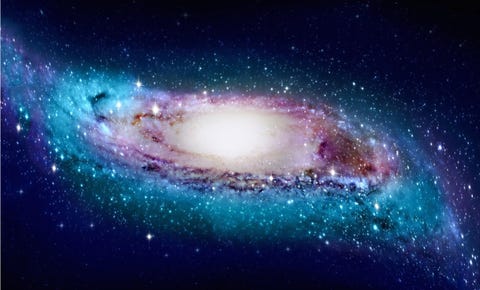Astronomers Discover the Milky Way Is More Twisted and Warped Than We Thought
A new survey of more than a thousand stars reveals the true shape of our galaxy.
By Avery Thompson CHEN XIAODIAN
CHEN XIAODIANA new survey of the stars in our galaxy reveals something unexpected: The Milky Way isn’t flat. Our galaxy is usually depicted as a flat disc of stars, but according to new research from the Chinese Academy of Sciences, it’s actually twisted.
The researchers managed to accurately determine our galaxy’s shape by measuring the distances to so-called Cepheid variable stars. Cepheids are extremely useful to astronomers because it's easy to tell just how far away a Cepheid is from a point of measurement. Astronomers can use these stars to create a map of the entire galaxy.
Most stars are just points of light of variable brightness, which makes it nearly impossible to tell how far away they are. After all, a bright star could be close by, or just really big. A dim star could be far away, or just really small. To an astronomer looking through a telescope here on Earth, all of these stars are just points of light.
Cepheids are different, though. A Cepheid star changes its brightness at regular intervals, getting dimmer and brighter again over a span of days, weeks, or months. How long that interval changes depends on how bright the Cepheid is: the brighter the star, the longer its brightness cycle. Working backward, astronomers can use that cycle to determine the brightness of a Cepheid, and from there very accurately measure how far away it is.

A graph showing a collection of Cepheid variable stars mapped in relation to our sun, in orange.
CHEN XIAODIAN
The scientists from the Chinese Academy of Sciences used this method to create a three-dimensional map of over a thousand Cepheid variable stars in our galaxy, from the innermost core to the outer edges. Effectively, this became a grainy map of our entire galaxy, and it shows something interesting: Rather than all the stars existing on the same flat plane, the data shows that our galaxy is twisted, forming more of an "S" shape.
Ours isn’t the only big spiral galaxy to be twisted like this; more than half of all spiral galaxies have some sort of twist to them. This twist is caused by the gravitational pull of the galaxy’s inner stars on the outer edge of the disc. This new information tells us that the Milky Way is pretty normal as far as galaxies go, but we may have been imagining its shape wrong for quite some time.
No comments:
Post a Comment